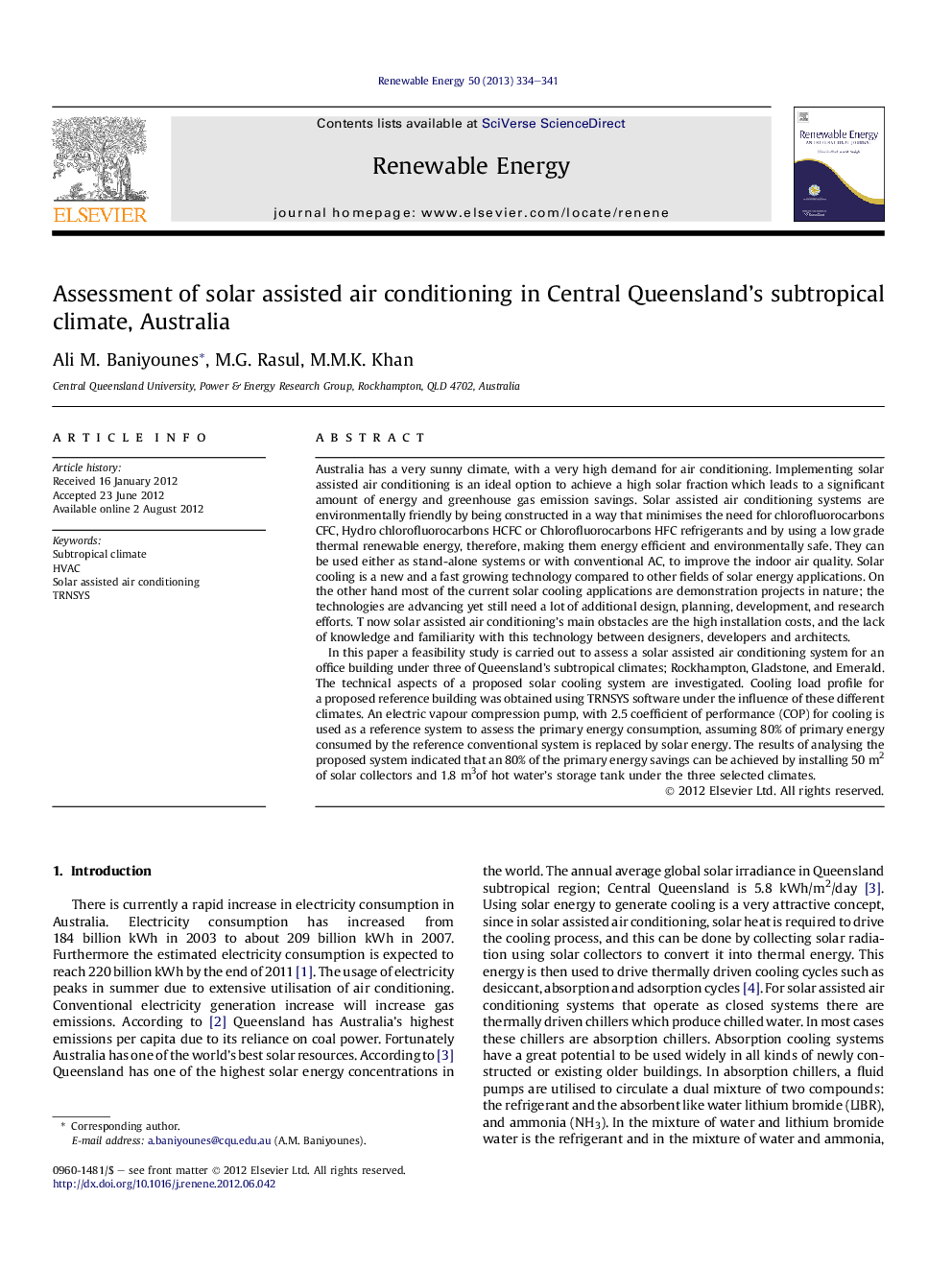| کد مقاله | کد نشریه | سال انتشار | مقاله انگلیسی | نسخه تمام متن |
|---|---|---|---|---|
| 300381 | 512480 | 2013 | 8 صفحه PDF | دانلود رایگان |

Australia has a very sunny climate, with a very high demand for air conditioning. Implementing solar assisted air conditioning is an ideal option to achieve a high solar fraction which leads to a significant amount of energy and greenhouse gas emission savings. Solar assisted air conditioning systems are environmentally friendly by being constructed in a way that minimises the need for chlorofluorocarbons CFC, Hydro chlorofluorocarbons HCFC or Chlorofluorocarbons HFC refrigerants and by using a low grade thermal renewable energy, therefore, making them energy efficient and environmentally safe. They can be used either as stand-alone systems or with conventional AC, to improve the indoor air quality. Solar cooling is a new and a fast growing technology compared to other fields of solar energy applications. On the other hand most of the current solar cooling applications are demonstration projects in nature; the technologies are advancing yet still need a lot of additional design, planning, development, and research efforts. T now solar assisted air conditioning's main obstacles are the high installation costs, and the lack of knowledge and familiarity with this technology between designers, developers and architects.In this paper a feasibility study is carried out to assess a solar assisted air conditioning system for an office building under three of Queensland's subtropical climates; Rockhampton, Gladstone, and Emerald. The technical aspects of a proposed solar cooling system are investigated. Cooling load profile for a proposed reference building was obtained using TRNSYS software under the influence of these different climates. An electric vapour compression pump, with 2.5 coefficient of performance (COP) for cooling is used as a reference system to assess the primary energy consumption, assuming 80% of primary energy consumed by the reference conventional system is replaced by solar energy. The results of analysing the proposed system indicated that an 80% of the primary energy savings can be achieved by installing 50 m2 of solar collectors and 1.8 m3of hot water's storage tank under the three selected climates.
► We selected three Australian subtropical sites to evaluate a solar cooling system.
► We used TRNSYS 16 to asses systems performances and proposed buildings cooling load.
► A number of runs of system simulation were carried out using different parameters.
► Systems are evaluated based on solar fraction and primary energy savings.
► Primary energy savings are feasible in all examined sites.
Journal: Renewable Energy - Volume 50, February 2013, Pages 334–341